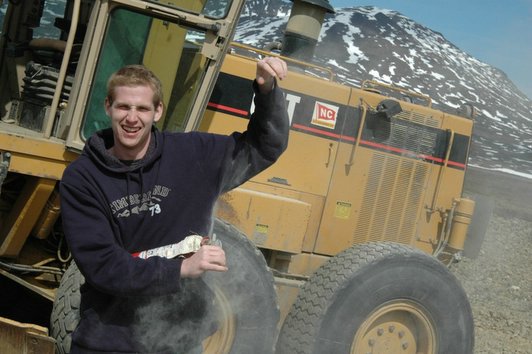I got a chance to watch the HBO documentary
Thrilla in Manila tonight. I'm not sure if Joe Frazier's side of the Ali-Frazier rivalry was as untold as the documentary suggests it was. I've read a handful of boxing books, and most of them mention how unfair and malicious Ali's racial attacks on Frazier were. My father, a Frazier die-hard, had been telling me Ali was wrong to call Smokin' Joe an Uncle Tom since I was about twelve years old. But it was nice to see a nice, long take on the fight told mostly from Frazier's side, since the focus is so often on Ali.
I loved seeing Araneta in there, as well as the random shots of the hazy Manila skyline. The best bit of Philippine trivia had to be the fact that Carlos Padilla, Jr., was brought in at the last minute to referee the fight. He's related to Robin Padilla, the country's current top action star -- and, if history repeats itself, a possible candidate for president someday -- although I haven't been able to figure out if Carlos Jr. is Robin's uncle or cousin. What's more, the documentary made it sound like Padilla was the best ref of all three Ali-Frazier fights because he was able to stand up to Ali and keep him from holding the back of Frazier's head. Imagine PBA refs being summoned to work the NBA finals! Chances are they wouldn't go down in history as doing the best job, like Padilla did, but at the very least they would make some memorably boneheaded calls, and goal-tending would become legal for a series, while players leaning in to draw contact on jump shots would be called for insane offensive fouls. If Rasheed Wallace ever fell on hard times after his NBA career and wound up in the PBA, I will move heaven and earth to be courtside to witness him lose his mind and give some referee an atomic wedgie.
Anyway, back to the movie. I would have liked to hear more from the Philippine side -- how did people respond to the two fighters, where did Frazier disappear to five days before the fight when he left the Hyatt to get some peace and quiet in the countryside. The documentary mentioned the outskirts of Manila and mountains, so I'm going to guess they took him to Antipolo, but there are a dozen other possibilities. I was interested to learn that Filipino fans in the Araneta booed Ali when he was introduced at the fight. In two weeks, had he been such a loudmouth that he managed to turn fans against him? Nothing kills an athlete's reputation in the Philippines like the label
mayabang (conceited). Was the fact that he was openly feuding with his wife and parading his mistress around town a factor? The side of this story that's waiting to be told is the Philippine side. And when it is told, I hope and pray that the filmmakers or researchers or writers working on it will cast the net for sources wider than Ronnie Nathanielsz and Imelda Marcos. Nathanielsz makes sense because of how close he was to Ali, but Imelda seemed to be included in the HBO documentary just because the filmmakers knew that if you roll the cameras around her, she's going to say something crazy. Imelda obliged, with her oft-repeated boilerplate about how when people raided her closet, all they found was shoes and no skeletons. Never mind Imelda's other "closet," the
Manila Film Center (I'm using some poetic license here), where Imelda is responsible for more than 150 skeletons being buried in the structure's concrete foundation. Marcos also casts Nathanielsz in a different light, because in a documentary that uses just Imelda Marcos and Ronnie Nathanielsz as its Philippine commentators it becomes harder to ignore Nathanielsz' connections to the Marcos regime. Instead of focusing on his career as a sportsman and journalist, I was left wondering why the HBO filmmakers decided to push this Marcos revival. Did Imee hook them up with some cheese from one of the Swiss bank accounts?
But that's really a minor criticism. The movie is about Joe Frazier and Muhammad Ali, in that order, and the Philippine details were the cherry on top.


